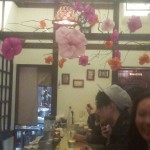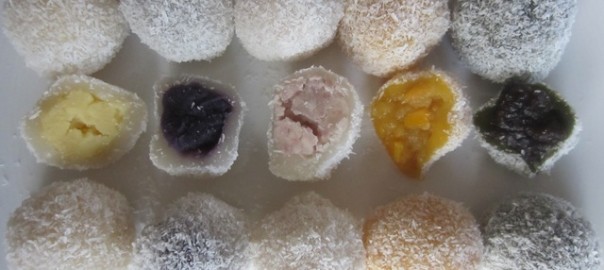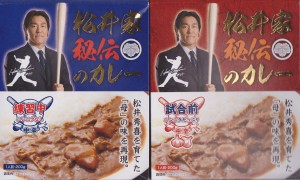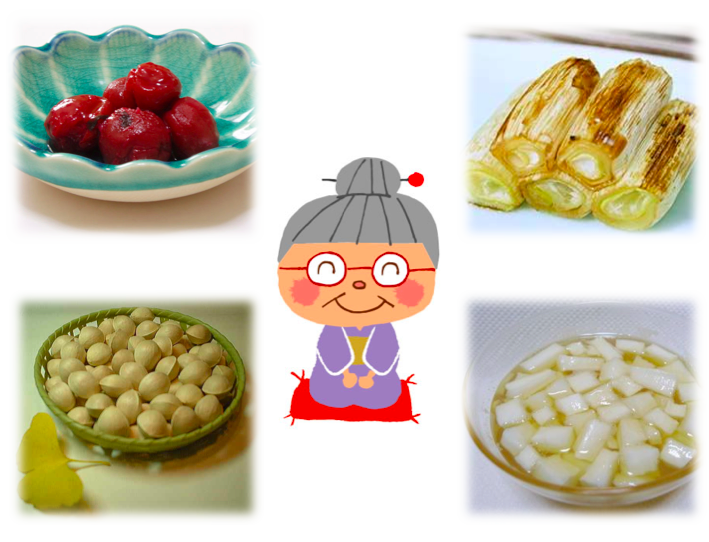I’ll Make It Myself! Kickstarter: Amy’s Mochi (Seattle)
L.M. Zoller (CIR Ishikawa-ken, Anamizu, 2009-11) is the editor of The Ishikawa JET Kitchen: Cooking in Japan Without a Fight. Ze works in international student exchange; writes I’ll Make It Myself!, a blog about food culture in Japan and the US; curates The Rice Cooker Chronicles, a series of essays by JETs and JET alumni on the theme of cooking/eating and being alone in Japan; and admins The JET Alumni Culinary Group on LinkedIn.
Look at these luscious hand-made mochi! I found this Kickstarter via Have You Nerd? and, readers, I need this in my life. Amy’s Mochi is fundraising to cover the costs of starting up in Seattle – kitchen equipment, website, marketing, research and development – with the intent to sell them at weekly events (farmers’ markets) and/or pop-up shops. Kickstarter here: Amy’s Mochi by Amy Eam — Kickstarter. Ends March 28, 2014!
WIT Life #262: 梅祭り!
WIT Life is a periodic series written by professional Writer/Interpreter/Translator Stacy Smith (Kumamoto-ken CIR, 2000-03). She starts her day by watching Fujisankei’s newscast in Japanese, and here she shares some of the interesting tidbits and trends along with her own observations.
Over the weekend I had the chance to try the 梅祭り (ume matsuri or plum blossom festival) Prix Fixe at Hi Collar in the East Village. It was my first time going to this cool hole-in-the-wall location, which hasn’t even been open for a year. Hi Collar operates as a coffee shop during the day, offering beverages and desserts, and at night transforms into a sake bar/restaurant. You can see some of the amazing ume offerings in the menu here, and I especially enjoyed the rice that closed the meal (although it lacked yuba which is one of my favorite foods, as they had run out). The cozy bar sits about 10 people (and has little hooks for your bags underneath, so convenient!), and we were there on Saturday night so it was packed. However, there is a turnover as some people just come in for a drink and leave fairly quickly, as opposed to people like my friend and I who lingered over our ume course for hours. At $38 it is amazingly reasonable so if you have a chance to go before the end of the month when the matsuri ends I would highly recommend it…
I also got the accompanying $30 Umeshu Pairing, which was phenomenal. It came with five glasses of various 梅酒 (ume shu or plum wine), not all of which were sweet. I really liked the Kimoto Umeshu from Daishichi Brewery in Fukushima. This sake producer was one of a few highlighted in a recent New York Times article about how the Japan government is using sake to revitalize the economy by Read More
I’ll Make It Myself!: Uranus Planet Power, Make Up! (Sailor Moon Cake)
L.M. Zoller (CIR Ishikawa-ken, Anamizu, 2009-11) is the editor of The Ishikawa JET Kitchen: Cooking in Japan Without a Fight. Ze works in international student exchange; writes I’ll Make It Myself!, a blog about food culture in Japan and the US; curates The Rice Cooker Chronicles, a series of essays by JETs and JET alumni on the theme of cooking/eating and being alone in Japan; and admins The JET Alumni Culinary Group on LinkedIn.
The 2014 Fandom Birthday Cake Season kicks off with a little something from Sailor Moon:
I’ll Make It Myself!: Food Report: Sakura Season 2014
L.M. Zoller (CIR Ishikawa-ken, Anamizu, 2009-11) is the editor of The Ishikawa JET Kitchen: Cooking in Japan Without a Fight. Ze works in international student exchange; writes I’ll Make It Myself!, a blog about food culture in Japan and the US; curates The Rice Cooker Chronicles, a series of essays by JETs and JET alumni on the theme of cooking/eating and being alone in Japan; and admins The JET Alumni Culinary Group on LinkedIn.
In part 1 of this two-part(?) series, I take a look at Starbucks’ annual sakura “latte,” Häagen-Dazs’ rose and sakura ice creams, and something special from Seattle!
—-
First, I’m very jealous of you all in Japan enjoying or about to enjoy the sakura food! I like to follow food trends, so, for posterity, here are some foods from cherry-blossom season 2014. Most of these are from international brands and chains that localize their products for Japan.

Screenshot of the Starbucks Products Page (2/16/2014) See also here.
I’ll Make It Myself!: The Rosette of Versailles: Apple Custard Tart with Walnut Crust
L.M. Zoller (CIR Ishikawa-ken, Anamizu, 2009-11) is the editor of The Ishikawa JET Kitchen: Cooking in Japan Without a Fight. Ze works in international student exchange; writes I’ll Make It Myself!, a blog about food culture in Japan and the US; curates The Rice Cooker Chronicles, a series of essays by JETs and JET alumni on the theme of cooking/eating and being alone in Japan; and admins The JET Alumni Culinary Group on LinkedIn.
I’m a huge fan of Ikeda Riyoko’sThe Rose of Versailles (Beru Bara) fan, so how could I pass up a version of tarte bouquet de roses? You’ll need a lot of walnuts, some maple syrup, and some elbow grease, but this elegant tart can be made in your Japanese kitchen, too!
WIT Life #258: Ivan Ramen debut!
WIT Life is a periodic series written by professional Writer/Interpreter/Translator Stacy Smith (Kumamoto-ken CIR, 2000-03). She starts her day by watching Fujisankei’s newscast in Japanese, and here she shares some of the interesting tidbits and trends along with her own observations.
The recent addition of Japanese food or 和食 (washoku) to UNESCO’s Intangible Cultural Heritage list is something that warmed the hearts of all of us Japanophiles out there. Although sushi gets more attention, ramen is what is considered to be Japan’s soul food and is increasing its presence here in the city at a rapid rate. I previously wrote about the impending arrival of Ivan Ramen to the New York scene, and his slurp shop has now set up camp in the new Gotham West Market. I finally had the chance to try it out the other day, and really enjoyed the meal even though I am not a huge ramen lover to begin with. My friend and I shared a bowl each of the roasted garlic mazemen and the chili eggplant mazemen (pictured here), both featuring rye noodles and minimal broth. I liked the powerful punch of the garlic version with its chicken and dashi double soup, whereas my friend preferred the milder vegetarian version.
Besides three other types of regular ramen, there are two kinds of donburi and curry rice. To hear more about Ivan Orkin and his path to becoming a ramen restauranteur, check out this profile in today’s NYT.
Around Japan in 47 Curries: Mrs. Matsui’s Ishikawa Slugger Sauce
Tom Baker (Chiba, 1989-91) is writing a 47-part series of posts on his Tokyo Tom Baker blog, in which he samples and comments on a curry from a different prefecture each time. Here’s an excerpt from his 16th installment, in which he tastes a facsimile of the home cooking that the most famous person from Ishikawa Prefecture grew up on.
Professional baseball player Hideki “Godzilla” Matsui was born in 1974 in the town of Negari, in Ishikawa Prefecture. Most mothers want their sons to grow up to be big and strong, but few succeed as dramatically Mrs. Matsui did. As a kid, he was already such a powerful right-handed hitter that the other boys wouldn’t play with him unless he switched to batting left-handed. He did – and still went on to become one of the top batters in the world.
There must have been something in his mom’s cooking. Maybe it was her curry…
Now that Godzilla is retired, he has taken to hawking a brand of curry called “Matsui-ke Hiden no Kare,” or the Matsui family’s secret curry. In a clever bit of marketing, there is garlic-free “renshu-chu” curry for “during training” and also “shiai-mae” curry, which is loaded with garlic, for “before the game.”
Read the full entry here.
I’ll Make It Myself!: Japan-Friendly Thanksgiving Recipe Ideas
Leah Zoller (CIR Ishikawa-ken, Anamizu, 2009-11) is the editor of The Ishikawa JET Kitchen: Cooking in Japan Without a Fight. She works in international student exchange; writes I’ll Make It Myself!, a blog about food culture in Japan and the US; curates The Rice Cooker Chronicles, a series of essays by JETs and JET alumni on the theme of cooking/eating and being alone in Japan; and admins The JET Alumni Culinary Group on LinkedIn.
Hosting two Thanksgivings in Japan taught me to love the holiday and its food again. My friends are amazing cooks, and the sheer sense of community, of getting together to remake a tradition in our own way really made the holiday feel special.
Last year, I did a recipe-roundup of our meal. This year, I’d like to offer more recipes and suggestions for making Thanksgiving special in Japan or wherever you are.
WIT Life #254: Denver’s Japanese influence
WIT Life is a periodic series written by professional Writer/Interpreter/Translator Stacy Smith (Kumamoto-ken CIR, 2000-03). She starts her day by watching Fujisankei’s newscast in Japanese, and here she shares some of the interesting tidbits and trends along with her own  observations.
observations.
My interpreting travels bring me again to Denver, and earlier in the fall I posted here about the city’s amazing History Colorado Center, currently showing an exhibit about Japanese American internment during the war. It is still running, so make sure to check it out if you are in town! My clients and I spent the first week of our three-week journey in DC, as these Department of State programs always do. There I spent some time at the Memorial to Japanese-American Patriotism in World War II. It features two Japanese cranes caught in barbed wire on top of a tall marble pedestal, and it was created by Japanese-American sculptor Nina Akamu in 2000. It sits in a landscaped plaza surrounded by a granite wall with inscriptions of the battles that Japanese Americans fought in, as well as the names of Read More
I’ll Make It Myself!: Millet Muffins
L.M. Zoller (CIR Ishikawa-ken, Anamizu, 2009-11) is the editor of The Ishikawa JET Kitchen: Cooking in Japan Without a Fight. Ze works in international student exchange; writes I’ll Make It Myself!, a blog about food culture in Japan and the US; curates The Rice Cooker Chronicles, a series of essays by JETs and JET alumni on the theme of cooking/eating and being alone in Japan; and admins The JET Alumni Culinary Group on LinkedIn.
Check out the rice section in your local supermarket in Japan for other grains, and you’re often find zakkoku (雑穀) / kokumotsu (穀物), mixed grains and beans, which often includes millet. Millet is called awa (粟) or kibi (キビ) and is often sold by itself as uruchikibi (うるちキビ ) or mochi kibi (モチキビ).
WIT Life #252: Ivan Ramen
WIT Life is a periodic series written by professional Writer/Interpreter/Translator Stacy Smith (Kumamoto-ken CIR, 2000-03). She starts her day by watching Fujisankei’s newscast in Japanese, and here she shares some of the interesting tidbits and trends along with her own observations.
I can’t believe it’s been over a month since I’ve written here, but during that time I’ve traveled from Hawaii to LA to NY and then to Japan for various interpreting gigs. Needless to say, there were many adventures along the way! A particular highlight was getting to interpret for my favorite Japanese director, Hirokazu Kore-eda, when his fabulous new film Like Father Like Son (そして父になる) debuted at the New York Film Festival last month. It will have its widespread release here in the States early next year, and I will write more about it and meeting the director then…
It’s always great to be home again, and one of the best parts is being able to enjoy the many events taking place on a daily basis here in th e city. Last night I was able to check out one at Strand Books, which hosted the author Ivan Orkin to talk about his experiences running a ramen shop in Tokyo, his new memoir/cookbook, and the opening of his upcoming ramen shop here in NY. I was looking forward to meeting Orkin as he graduated from Read More
e city. Last night I was able to check out one at Strand Books, which hosted the author Ivan Orkin to talk about his experiences running a ramen shop in Tokyo, his new memoir/cookbook, and the opening of his upcoming ramen shop here in NY. I was looking forward to meeting Orkin as he graduated from Read More
Maccha Macadamia Cookie Recipe
Posted by Benjamin Martin, a JET from 2008-2013 in Okinawa, publisher of the blog MoreThingsJapanese.com and author of the award-winning YA fantasy series Samurai Awakening (Tuttle).
 At this point I should probably get a lawyer, because I’m about to get a ton of hate-mail from dietitians. As promised, I’ve cooked up a recipe involving two of my favorite things. Maccha (aka Matcha) and white chocolate macadamia cookies. If you like maccha lattes or really any snack with that wonderfully powdered green tea in it, you’ll love these. While not a traditional Japanese food item, I hope you’ll give them a try. If you do share a photo!
At this point I should probably get a lawyer, because I’m about to get a ton of hate-mail from dietitians. As promised, I’ve cooked up a recipe involving two of my favorite things. Maccha (aka Matcha) and white chocolate macadamia cookies. If you like maccha lattes or really any snack with that wonderfully powdered green tea in it, you’ll love these. While not a traditional Japanese food item, I hope you’ll give them a try. If you do share a photo!
Ingredients
- 2.5 cups (500ml) flour
- 1 tsp (small spoon) salt
- 1 tsp (small spoon) baking soda
- 1 cup (200ml) unsalted butter (or about 200 grams)
- .5 cup (100ml) white sugar
- .75 cup (150ml) brown sugar (packed)
- 1 tsp (small spoon) vanilla
- 2 eggs
- 1 cup (200ml) maccha
- 1 cup (200ml) crushed macadamia nuts
- 1 cup (200ml) white chocolate chips (or chopped bars)
Recipe
Pre-heat oven to about 350 F (180C). For best results use a baking sheet.
Cream butter and sugar, add in vanilla and eggs. Stir until well mixed. Add maccha. Next stir in flour, baking soda, and salt until well mixed. Stir in chocolate and nuts. The mixture will be slightly sticky.
Cover baking sheet with parchment paper. Form the dough into small balls about 1.5 inches in diameter and place them on the tray press them slightly to flatten. Ensure enough space so that they do not join after melting into circles.
 Bake for about 10 minutes, or until they are golden brown. Baking time will determine if they are chewy or crunchy. Remove from oven and let them cool completely before removing from the parchment paper.
Bake for about 10 minutes, or until they are golden brown. Baking time will determine if they are chewy or crunchy. Remove from oven and let them cool completely before removing from the parchment paper.
Makes a whole lot of deliciousness.
Originally posted on MoreThingsJapanese.com
I’ll Make It Myself!: Mister Donut Halloween Donuts 2013
L.M. Zoller (CIR Ishikawa-ken, Anamizu, 2009-11) is the editor of The Ishikawa JET Kitchen: Cooking in Japan Without a Fight. Ze works in international student exchange; writes I’ll Make It Myself!, a blog about food culture in Japan and the US; curates The Rice Cooker Chronicles, a series of essays by JETs and JET alumni on the theme of cooking/eating and being alone in Japan; and admins The JET Alumni Culinary Group on LinkedIn.
Last year’s Halloween-themed pumpkin-flavored Mister Donuts doughnuts were delicious. This year, they’ve added a ghost and Hello Kitty shapes, and it appears that the batter is normal but the icing is kabocha-chocolate flavored.
【RocketNews24】Feel better fast: Eight home remedies from the little old ladies of Japan
Michelle Lynn Dinh (Shimane-ken, Chibu-mura, 2010–13) is an editor and writer for RocketNews24, a Japan-based site dedicated to bringing fun and quirky news from Asia to English speaking audiences.
The only thing worse than catching a cold is feeling like you’re about to catch a cold. That achiness you can feel in your bones, followed by dread, worry and the thought, “I’m too busy to get sick now!” It’s enough to make you sick on the spot.
But fear not, the grandmothers of Japan have a plethora of home remedies that’ll get you feeling better in no time. Some may be little more than old wives’ tales, but when you’re feeling under the weather, why not drink hot onion water or smear ginger on your forehead. It actually might be good for what ails you.
I’ll Make It Myself!: Halloween Kit Kats 2013: Where’s the Pumpkin?
L.M. Zoller (CIR Ishikawa-ken, Anamizu, 2009-11) is the editor of The Ishikawa JET Kitchen: Cooking in Japan Without a Fight. Ze works in student exchange; writes I’ll Make It Myself!, a blog about food culture in Japan and the US; curates The Rice Cooker Chronicles, a series of essays by JETs and JET alumni on the theme of cooking/eating and being alone in Japan; and admins The JET Alumni Culinary Group on LinkedIn.
Halloween Kit Kats in Japan and US.
Let’s enjoy Halloween!
A standard Halloween dessert, pumpkin pudding has a sweet and gentle flavor that fills the mouth. Enjoy Halloween even more with pumpkin-pudding flavor Kit Kats. (Nestle Kit Kats Mini Pumpkin Pudding Flavorネスレ キットカット ミニ パンプキンプリン味)










